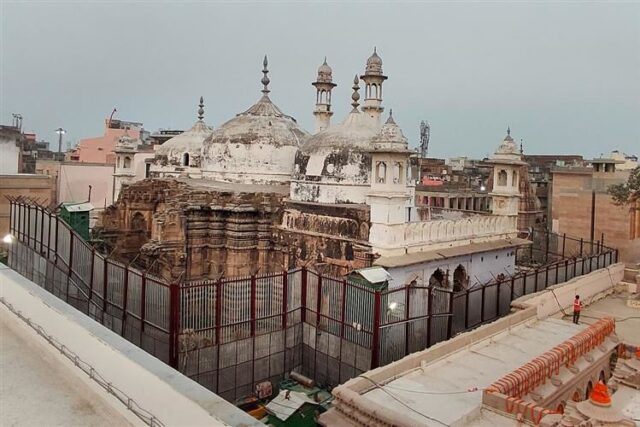
In a major victory for the Hindu side, a Varanasi court on January 31, 2024 allowed Hindu. devotees to offer prayers inside the Vyas Ka Tekhana’ area inside the Gyanvapi complex. The court has asked district administration to make the necessary arrangements in the next seven days.
Advocate Vishnu Shankar Jain, representing the Hindu side told an Indian media agency that the Puja will start within seven days. Everyone will have the right to perform Puja. “Hindu side allowed to offer prayers at “Vyas Ka Tekhana’. The District Administration will have to make. arrangements within 7 days.” Jain said.
The complex has four tahkhana (cellars) in the basement out of which one is still in possession of the Vyas family who used to live here. Vyas had petitioned that as hereditary pujari he be allowed to enter the tahkhana and resume pooja.
Hindu side lawyer. Advocate Subhash Nandan Chaturvedi says, “Today right has been given to perform puja at Vyas Ka Tekhana’ and the court has given the order to the District Officer for compliance of the order within a week.”
In a recent development, the Archaeological Survey of India (ASI) unveiled startling revelations from its exhaustive 850-page survey report. The report, released on January 25 after submission to the district court in Varanasi on January 21, sheds light on the historical complexities surrounding the existing structure at the Gyanvapi site.
According to the report, an inscription found in the lower room of the south corridor within the structure commemorates the construction of a mosque during the 20th regnal year of Mughal Emperor Aurangzeb, corresponding to A.H. 1087 (1676-77 CF). A meticulous comparison between this inscription and a copy made by ASI in 1965-66 uncovered deliberate attempts to erase the final two lines, which mentioned the construction and expansion.
The ASI’s comprehensive survey, encompassing scientific studies, architectural remains, artefacts, inscriptions, and sculptures, presents compelling evidence suggesting the pre-existence of a Hindu temple predating the current structure. The report, available with Organiser, highlights the presence of hundreds of artefacts, broken statues, and murtis, reinforcing the assertion of a pre-existing Hindu temple.
“Based on scientific studies/surveys, the examination of architectural remains, inscriptions, and artistic elements, it can be concluded that there existed a Hindu temple prior to the construction of the existing structure,” the ASI report concludes, echoing the sentiments of historical inquiry and meticulous investigation.
Before moving ahead with the ASI report, let us take you through a brief timeline of the case for the disputed structure at the Kashi Vishwanath Mandir site, which is claimed to be Swayambhu Jyotirlinga mandir by the Hindu side and an alleged mosque by the Muslim side.














